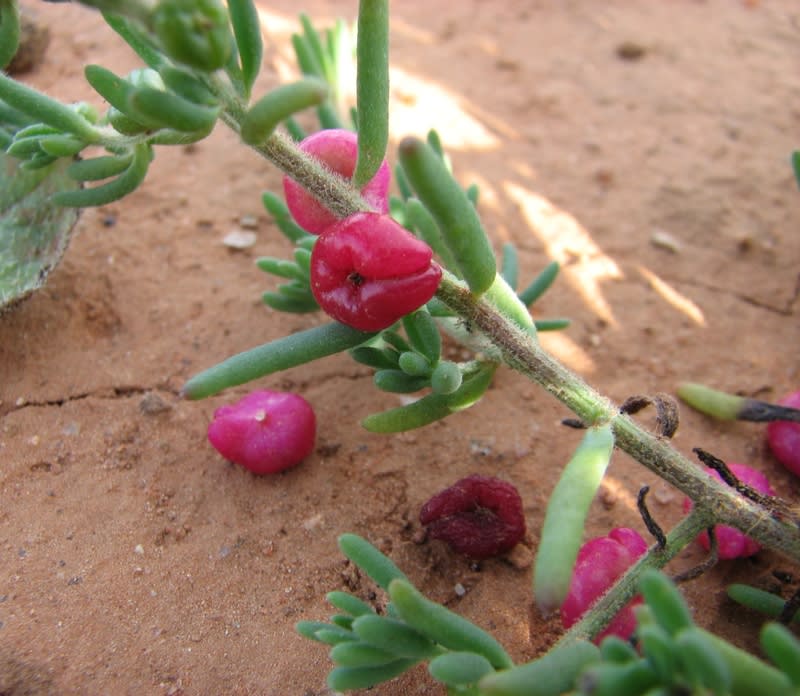Ruby Saltbush, Barrier Saltbush, Berry Saltbush, Native Currant
Enchylaena tomentosa

🌿 Morphology
🌞 Growing conditions
🌍 Origin and family
🌾 Uses
Warning: Despite the care taken in writing this sheet, it is essential to cross-reference sources before using or consuming any plant. When in doubt, consult a qualified professional
Permaculture uses
Ruby Saltbush is primarily used as an edible groundcover and soil stabilizer. The berries are edible raw or cooked, with a salty-sweet flavor. The leaves can also be eaten, providing a salty spinach-like green. Its dense growth habit makes it suitable for erosion control, windbreaks, and providing habitat for small wildlife. It can also be used as a salt-tolerant forage crop for livestock. Different cultivars may offer variations in berry color and size.
Permapeople description
Enchylaena tomentosa is a small, rounded shrub native to Australia. It is known for its colorful, edible berries.
Botanical description
Enchylaena tomentosa is a small, rounded shrub, typically growing to 0.3-1 meter in height and up to 1.5 meters in width. It is a member of the Amaranthaceae family. The stems and leaves are covered in fine, white, woolly hairs, giving the plant a greyish or silvery appearance. The leaves are small, succulent, and cylindrical or slightly flattened, about 5-20mm long. Flowers are inconspicuous, small, and yellowish, borne in the leaf axils. The fruits are small, fleshy berries, typically red or yellow when ripe, about 5-8mm in diameter. It's a highly salt-tolerant species found in arid and semi-arid regions. The plant is evergreen or deciduous depending on rainfall.
Companion planting
As a salt-tolerant species, Ruby Saltbush grows well with other halophytes. It can provide shade and ground cover for smaller plants. Its dense growth can suppress weeds. Little is known about specific companion planting interactions, but it generally benefits from mycorrhizal associations.
Propagation methods
Propagation is typically done via seed. Seeds can be collected from ripe berries and sown in well-draining soil. Cuttings can also be used, although they can be more challenging to root. Layering is also possible.
History and traditions
Indigenous Australians have long used Ruby Saltbush as a food source, eating the berries fresh or dried. The plant was also used medicinally, with the leaves being used to treat sores and skin conditions. Early European settlers also consumed the berries and leaves. The plant has a relatively long history of use as a bush tucker food.
Usage calendar
Flowering typically occurs in spring and summer (September-March in the Southern Hemisphere), but can occur year-round depending on rainfall. Berries ripen in summer and autumn (December-May). Planting is best done in spring or autumn. Pruning can be done to maintain shape or remove dead wood at any time of year.
